
Transitions: Biophilia, Beauty and Herbaria
by EMMA ROBERTSON
- View Emma Robertson 's Biography
Emma Robertson is an artist and Associate Professor based in Sydney in the Faculty of Art and Design, University of New South Wales.
Transitions: Biophilia, Beauty and Herbaria
Emma Robertson
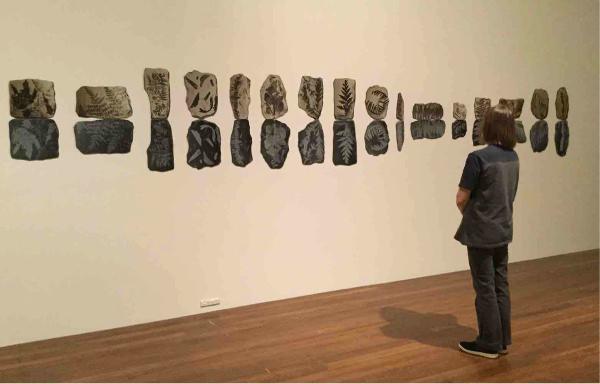
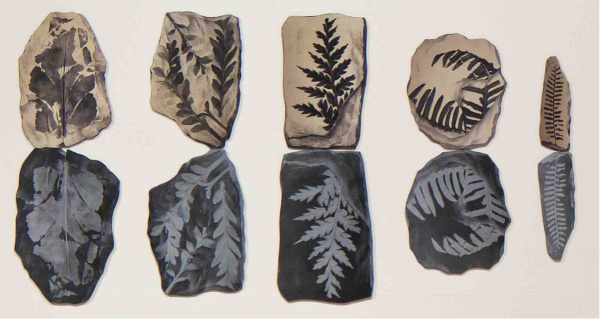
Figure 1. Emma Robertson, Natural Histories, 2017, whole view (top) and detail (bottom). Mixed media, dimensions various. Photograph (top) by Gabrielle Bates and (bottom) by Ian Hobbs.
My work has investigated endangered plant species, herbaria archives, and botanic gardens as sites of emotion, and emotional histories, in order to produce creative works that expand the conventions and the discipline of drawing. Inspired by the peaceful environments found in herbaria, I have explored themes of memory, mindfulness and meditation, aiming to elicit alternative responses to the anxiety overwhelmingly provoked by visual representations of the impact of global warming and climate change. Through deliberately applied methods of creative engagement, intended to provoke positive emotional responses, I have researched new forms of interdisciplinary processes and approaches, in regards to the study of beauty found in flora in the natural world.
My practice based research over the last three years has explored different ways to use drawn images of endangered plants in order to connect with a wider and more diverse audience about the impact of climate change. Reconceptualising static drawings into new forms, including moving images and artist's books, can potentially extend and deepen emotive experiences, and can assuage feelings of anxiety in relation to climate change. Archival material from herbaria can re-emerge in unexpected places, and new locations, and become connected to, and entangled with, new ideas. My attentiveness to the artistic potential for deeper research into the resonant and embodied beauty found in botanic archives, began some time ago, during a year of focussed work in the Royal Botanic Garden Sydney.
In the opening speech for my solo exhibition, Ascendant and Descendant, I described the experience of being the 2008 Artist in Residence at the Royal Botanic Garden Sydney as life changing. Working with the scientists, gardeners and guides proved an invaluable education, and as I looked at the many framed drawings on the walls of the Red Box Gallery, I felt that I was not at the end of an extraordinary experience, but at the beginning of a new one. In the years since then, I have continued to research and draw critically endangered plants, and there are now even more at-risk species than before. Climate change has already negatively impacted rare and unique Australian flora, many of which grow on this continent and nowhere else on Earth. My mixed emotions at the exhibition opening were not just connected to my desire to learn more, and to draw more - I needed to explore something else, and to better understand the affecting sense of stillness, and calm I retained from spending time in the Herbarium.
Throughout 2008 I worked with the Royal Botanic Garden Sydney's scientists, drew pressed specimens in the Herbarium, explored the Library, visited the Mount Annan Seedbank, and most of all, walked and talked in the gardens with the people who cared for and loved the plants. Everyone, it seemed, had a story to tell, and I quickly learned that a good shortcut was to simply ask what a person's favourite plant was, and why. Plants evoked many memories, and associations, and often passionate feelings of protection for their endangered, vulnerable status. The then Director of the Royal Botanic Garden Sydney, Dr Tim Entwisle, said in his speech to launch my residency year, that there is a parallel to be made between preserving art and plants:
We already know the current world population can't survive on the resources on earth today. On 'our watch' we will be responsible for destroying the unique products of 3.8 billion years of evolution. Each one is as irreplaceable as the Mona Lisa, or the Buddhist rock carvings in Afghanistan in 2001. Species are irreplaceable 'works of art' in our human era.1
My 2009 exhibition, Ascendant and Descendant tried to walk a fine line between pessimism and hope. In the Herbarium, for every precious and beautiful, but now extinct Bennett's Seaweed (Figure 2), there was a rediscovered joy, such as the Wollemi Pine (Figure 3), one of several endangered "Living Fossils" that I drew in a series (Figure 4).2
I explored three main themes - Archaeologies; a modern-day Book of Hours; and Collectors. The oval format evoked the earlier history of Victorian mourning frames, which were sometimes carved out of jet (a fossilised tree), and which often featured the symbolic use of flowers and plants. Fossil, Amber, Ice (Figure 5) showed that herbaria don't just have pressed plants, but also cupboards full of fossils, and other fascinating treasures. The use of ice images in this artwork honoured some of the remarkable seeds on Earth, which can survive frozen for thousands of years, and yet still remain viable for future life.
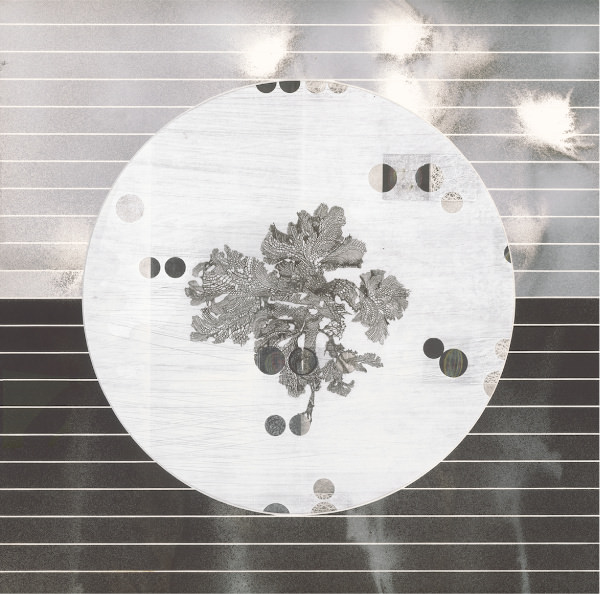
Figure 2. Emma Robertson, The Shape of Loss, 2009. Mixed media drawing, 42 x 42 cm. Private Collection. Drawn from a pressed Herbarium specimen in the Royal Botanic Garden Sydney, of the extinct Bennett's Seaweed, and also inspired by a quote from Colette: "It is the image in the mind that binds us to our lost treasures, but it is the loss that shapes the image." Bennett's Seaweed only grew in Sydney Harbour and nowhere else on Earth, and is thought to have become extinct in the late 1800s (last collected in 1886).
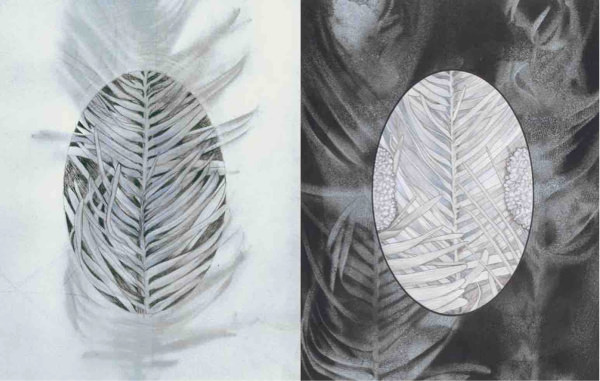
Figure 3. Emma Robertson, Wollemi Pine, 2009. Mixed media drawing, 44 x 28 cm. Private Collection. Once thought to be extinct, a drawing of the rediscovered Wollemi Pine, from studies of pressed specimens in the Royal Botanic Garden Sydney's Herbarium, and from frond samples in my studio.
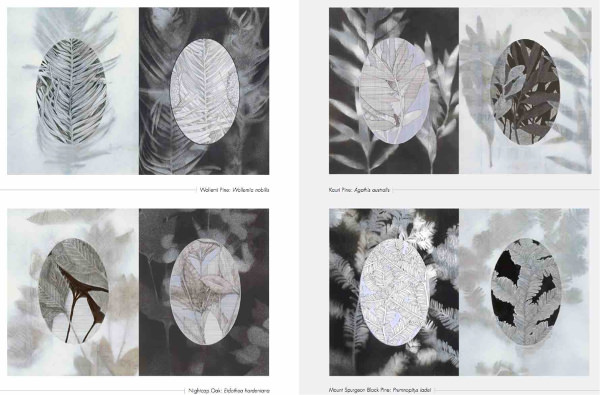
Figure 4. Festuca purpurascens, collected by Sir Joseph Banks and Daniel Solander, 1769. Source: Smithsonian National Museum of Natural History, Washington, D.C., United States.
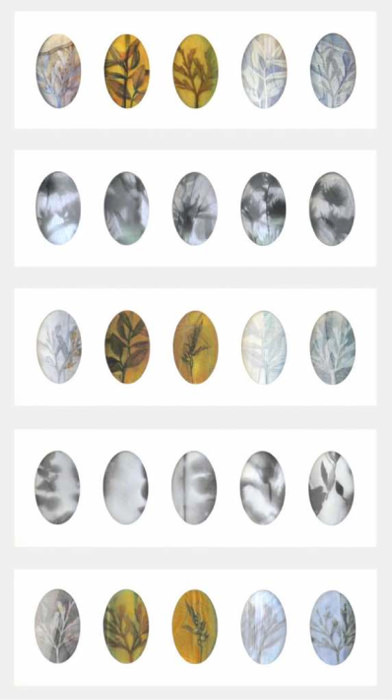
Figure 5. Emma Robertson, Fossil, Amber, Ice, 2009. Mixed media drawing, Private Collection.
Five panels in the completed series, each of the panels measured 24 x 67 cm.
Over the last three years I sought to push and develop my work in new ways, to offer an alternative discourse to the overwhelming pessimism of climate change debates. Taking my artwork out of the frame, and then off the wall, into short films and three dimensional installations, has allowed me to actively explore more uniquely original forms of artistic expression. I was also able to integrate a lifelong passion for meditation and mindfulness into the new works as they evolved and developed, and this presented an opportunity to combine not just the earlier knowledge from the botanists at the gardens, but from new studies in neuroscience and psychology about how the brain constructs emotional responses which flow through to the body.3 I sought not only to represent the beauty and vulnerability of plants, but to explore how plants can heighten our abilities to feel and reconnect with nature, and to bring that sensibility into galleries and other spaces in less conventional ways. I assert that we can encourage and enhance our ability for a more considered reconnection with our own natures, and a reflection on potential loss, by looking at artwork derived from the incidental and concomitant beauty found in herbaria collections. Inspired by the layering of pressed plants in folders, and by the way that multiple aspects of species are preserved in Herbarium samples on a single page (seed, leaves, plant, flower, root) I explored new compositions and perspectives from scientific illustrations into my drawings.
The first of these new experiments was selected for exhibition in 2016 at the Future Stratigraphy exhibition at Sydney College of the Arts Gallery, Sydney University, curated by Dr Kath Fries. The Archaeology of Absence (detail, Figure 6) featured drawings of endangered plants in free floating circles and cut paper pieces, across the large expanse of a three-metre long wall. Microscopes used by the botanists, and the tall circular glass jars in the Spirit Room of the Royal Botanic Garden Sydney, also influenced a transdisciplinary compositional approach. The aesthetic principal of beauty, found in the archives, shaped my response, and I aimed to layer together and integrate images from the personal, the representational, and the historic, and for the work to feel calm and reflective, with an inherent sense of order and balance. I deliberately explored: the changing of scale and detail, from small to large; layering, in the pressed plants appearing in front of the drawing background; colour focal points, in small details against otherwise neutral fields; textural variation, in real plants juxtaposed with cut paper works; and finally, balance and pattern, in the use of repetition and shadows in some of the drawings. In addition, most of the new works had a temporal aspect, to present a dialogue between the time in which we live, while integrating images of plants sourced from the past.
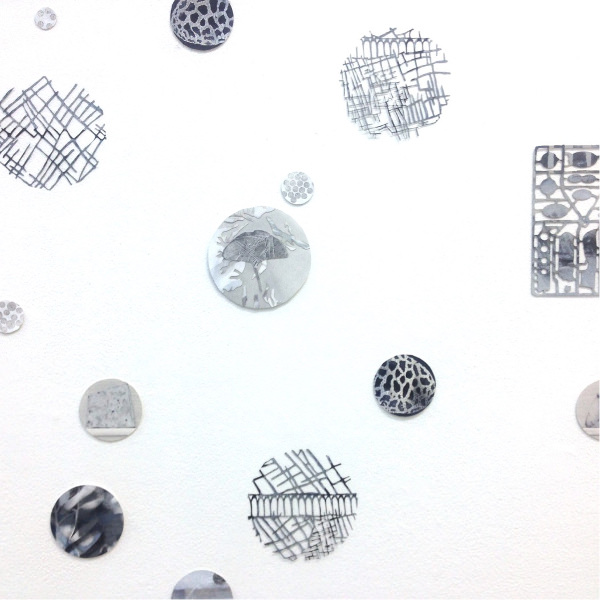
Figure 6. Emma Robertson, The Archaeology of Absence, 2016. Mixed media drawing, Private Collection. Detail showing a Ginkgo Biloba leaf, which is a Living Fossil.
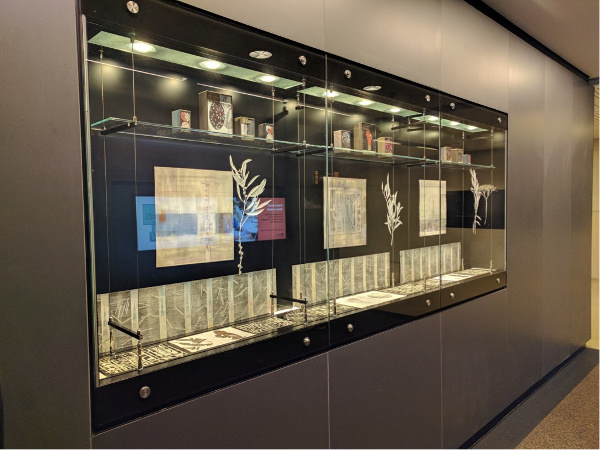
Figure 7. Emma Robertson, Requiem (Red), detail, 2017, mixed media, sizes of installation various. This shows one of three large glass vitrines on three floors of the Fisher Library at Sydney University. The critically endangered Eucalyptus Copulans pressed plants were attached to the glass doors, floating in front of the drawings.
The second series, Requiem (Red) was displayed in three large glass vitrines in the Fisher Library at Sydney University for several months in 2017 (Figures 7, 8, 9 and 10). This installation used the device of repurposed old display boxes from the British Museum, and the cast shadows of actual pressed plants, to create a layered entangling of plants and people, in honour of the scientists and others who work to update The Red List of endangered species. The work evoked the feeling of the stillness and quiet of herbaria, and the setting in the library enhanced this sense of history, and the different forms of storing precious unique objects. My aim was to layer together and integrate images from the personal, the representational, and the historic, and for the work to feel calm and reflective, with an inherent sense of order and balance.
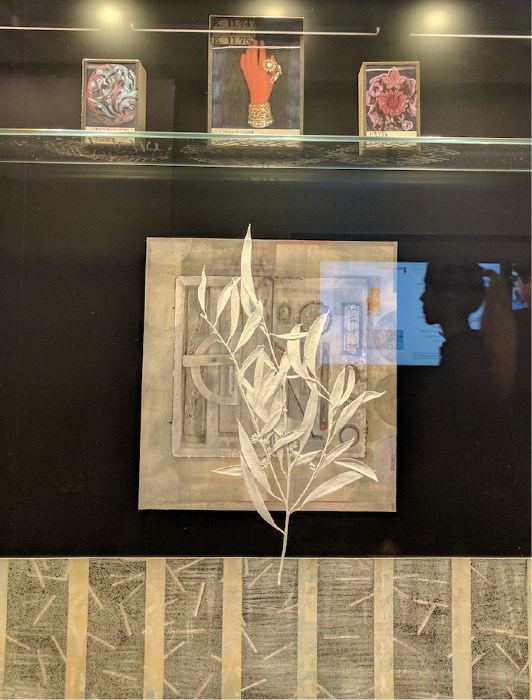
Figure 8. Requiem (Red) showing a detail of one of three glass vitrines on three floors of the Fisher Library at Sydney University. On the top shelf are repurposed old display boxes from the British Museum, with the critically endangered Eucalyptus Copulans pressed plant in front.
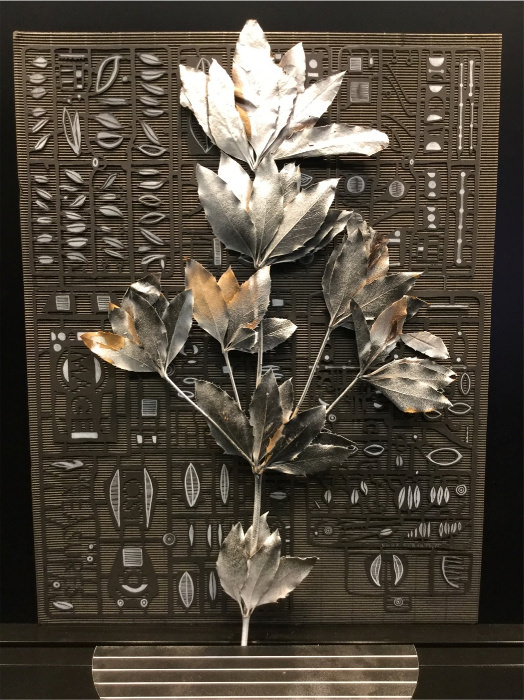
Figure 9. Emma Robertson, Requiem (Red), detail, 2017, mixed media, sizes of installation various. This shows a detail of one of three glass vitrines across three floors of the Fisher Library at Sydney University. Pressed plants of endangered species are included in the installation artwork to evoke the feeling of Herbarium displays. The critically endangered Nightcap Oak is shown here, in front of a cut paper drawing featuring plant details, including seeds and leaves.
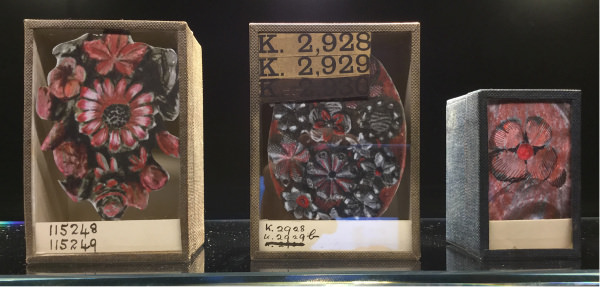
Figure 10. Emma Robertson, Requiem (Red), detail, 2017, mixed media, sizes of installation various. This shows a detail of one of three glass vitrines on three floors of the Fisher Library at Sydney University. On the top shelf were repurposed old display boxes from the British Museum. The drawn images in the boxes reference mourning jewellery, which was often made out of jet, a fossilised wood, in Victorian times. Sizes of installation various.
The first series of new works featured free floating circles; the second an installation in a library; and the third series used scanned images of my drawings to create a visual meditation and narrative in two short films. The first film was called Micrographia, (Figure 11) and the second Deposition Lines (Figure 12). Both films used soundscapes and combined real images of endangered plants with the drawings, and they integrated cut paper layers, changing focal points, alternating light sources, and other visual devices to promote a calm, meditative experience (links to both films are at the end of this article).
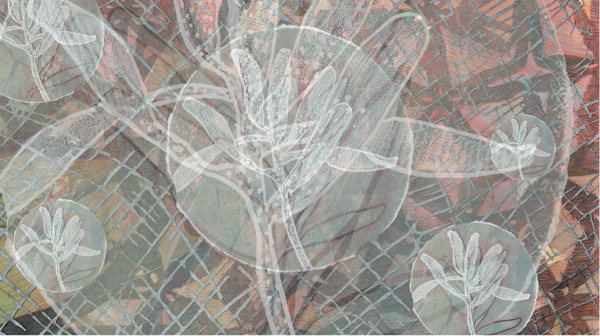
Figure 11. Emma Robertson and Margaret McHugh, Micrographia still, at 2.44 from video.
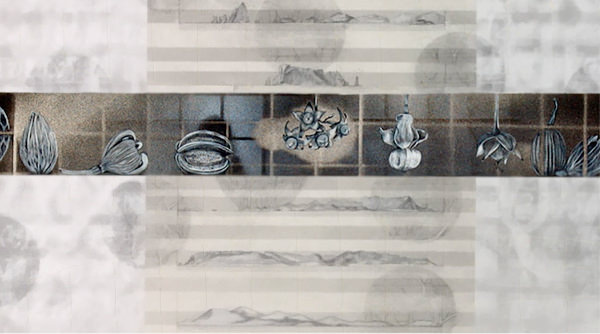
Figure 12. Emma Robertson and Margaret McHugh, Deposition Lines still, at 1.14 from video.
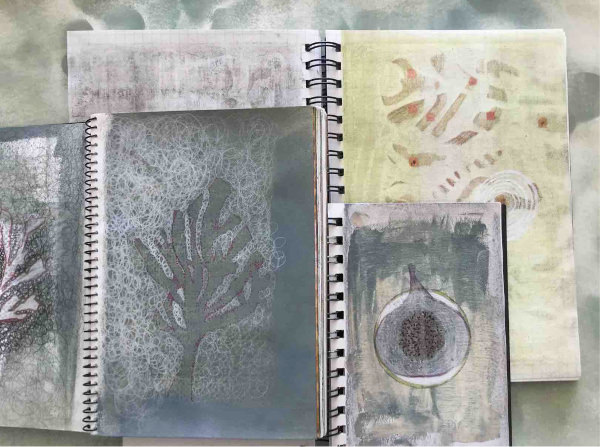
Figure 13. Emma Robertson, progressive documentation and research in working drawings are an integral part of my creative process, and this influenced the layering seen in the films. Sketchbooks 2014-2017, sizes various.
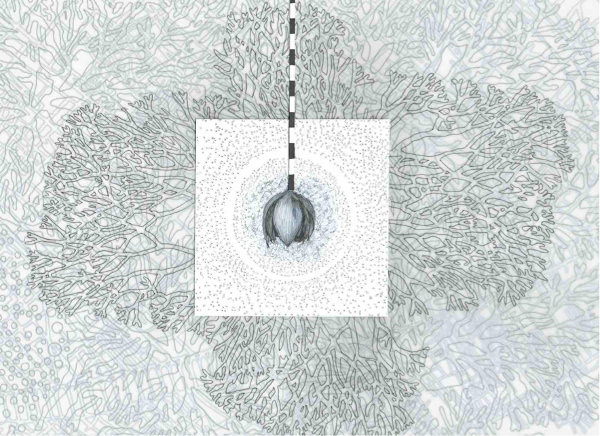
Figure 14. Emma Robertson, Test Drawing exploring layers, webs, and an interplay between urban environments and natural vegetation, 2015, mixed media, 30 x 42 cm. The idea of turning the pages of Herbarium folders, revealing image after image, appears in the drawing series, and in both the short films.
Influenced by my ongoing sketchbook documentation (Figure 13) and earlier test drawings (Figure 14), I then developed another large-scale installation drawing, not long after the films were completed. This work, Living Fossils, (Figure 15), formed a reinterpretation of appropriated scientific illustration images. In June-July of 2017 I spent some time working at the Royal Botanic Garden Edinburgh, Scotland, and discovered a wonderful book of drawings and studies of fossil plants, preserved in coal and rock, from more than 160 years ago.4 I was disappointed to see that the research and writing of the scientist and author, Dr Constantin von Ettingshausen was acknowledged and prominently displayed, but that the names of the illustrators, whose extraordinary skill and beautiful renderings so adeptly brought the scientific understanding in the book to the fore, were unfortunately not recorded for posterity. I felt that bringing the images of the preserved plants back to life in a new format, and much larger scale, could showcase the remarkable aesthetics of their work (Figure 15). In my experimentation, I discovered that watercolour paper gives a lovely textural mark, when it is perforated by a sewing machine needle run over the surface, without thread in it, as seen in the detail in Figure 16. Cross sections of fossilised trees also appeared, and I merged the work of the old with the new, past to present, by floating many of the 28 images onto laser cut paper circles, creating a duality between urban settlements from archaeological maps, juxtaposed with the plants. Utilising the concept of meditative mandalas and enso rings, without a defined beginning and end, I arranged the circles into a large two metre diameter circle.
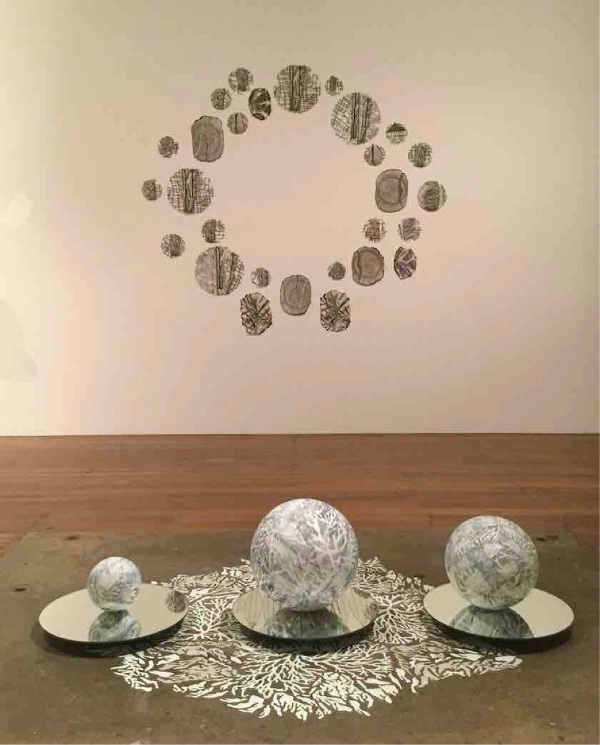
Figure 15. Emma Robertson, Living Fossils, 2017. Mixed media, 200 x 200 cm. Photograph by Ian Hobbs.
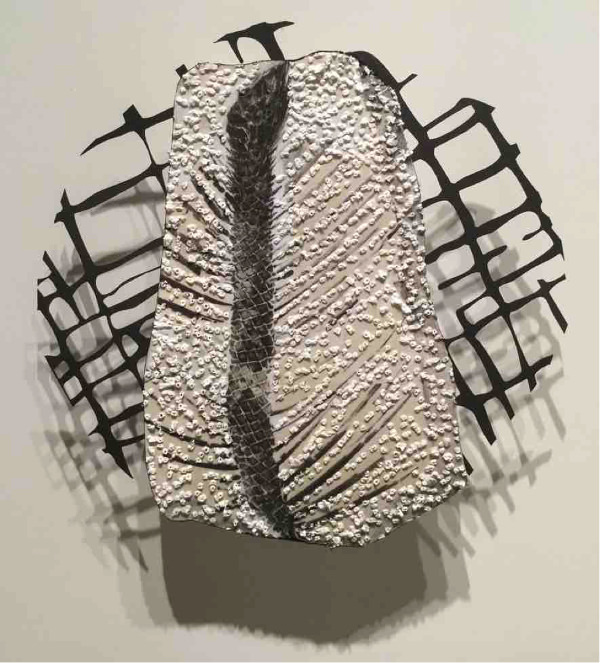
Figure 16. Emma Robertson, Living Fossil, detail of one of the 28 panels, 2017.
In October 2017, as part of The Big Anxiety Festival and Mental Health Month, I ran two public workshops at the Royal Botanic Garden Sydney.5 The workshops built on the idea that using drawn images of observed nature can allow us to reconnect with our own emotions and help to alleviate anxiety. We used Herbarium samples, seeds, plants and drawings, as sources of inspiration. The aesthetic principal of beauty is so often found in the careful arrangement of Herbarium specimens, and I propose that our empathy can be enhanced by our emotional response to this beauty, and through studying their details. At the same time as the workshops, an exhibition of my drawings was on display at the Fisher Library, Sydney University, and selected images from Art and Nature: Antidotes to Anxiety, are shown in Figures 17 and 18. (Figure 1 shows a subsequent installation / exhibition view of Natural Histories).
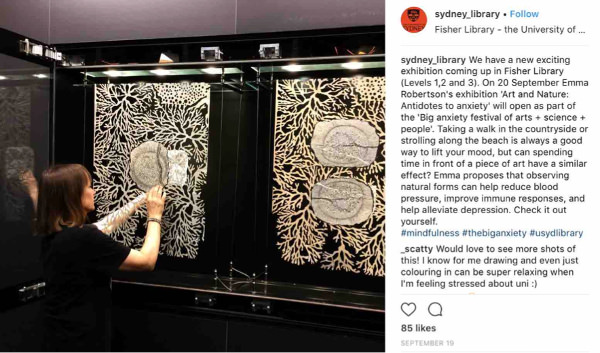
Figure 17. Emma Robertson, Art and Nature: Antidotes to Anxiety, installing Case 4, 2017.
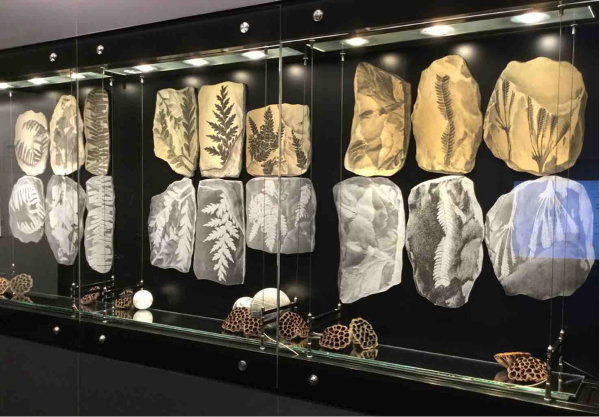
Figure 18. Emma Robertson, Art and Nature: Antidotes to Anxiety, completed Case 5, 2017.
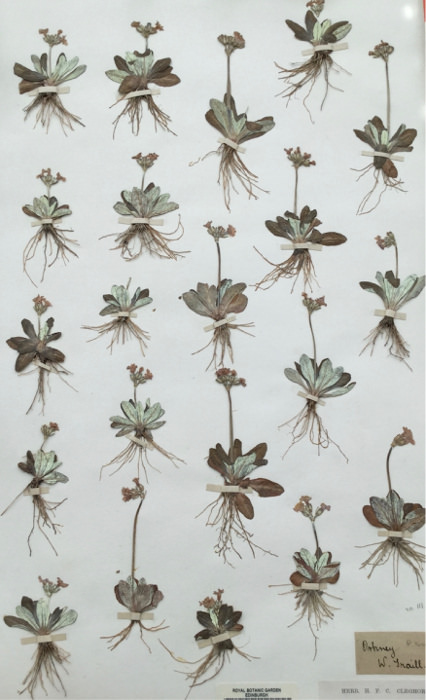
Figure 19. Endangered Scottish Primula from Orkney, dated 1896, photographed at the Herbarium in the Royal Botanic Garden Edinburgh, June 2017.
On a recent visit to the Herbarium at the Royal Botanic Garden Edinburgh, I photographed an exquisite arrangement of endangered Primula (Figure 19). This image is an eloquent summary of the ongoing preoccupation I have with studying the natural world, in order to embody our vital relationship with plants. The silent sentience of the Primula is enhanced by their arrangement on the sheet of paper, as a collective family group, and their remarkable beauty is still vital and made manifest, 122 years after their collection in Orkney. I am inspired by their exquisite fragility and form, and by the scientifically oriented, yet perfectly balanced, arrangement, and, I would argue, artistically considered composition. I believe that integrating botany and art, and exhibiting creative works which champion their disciplinary interconnections, can provide important opportunities to reflect on our place in nature, and highlight what remains for us to protect (Figure 20). At a recent exhibition of my work, I overheard a young teenage girl say to her mother that she "Wanted to pick the globe up, hold it, and take it home," with her. Artists often find it hard to assess if their work has been successful in the way that they hope and intend, and it is difficult to critically reflect on pieces that have taken months to iteratively develop and create in the studio. The close and sometimes subjective experience of making original drawings can, in my experience, preclude an honest adjudication of success and impact. But on this occasion, I was satisfied, and as she turned to go, I heard the young girl add "It is so beautiful."
Recent surveys and statistics suggest that an increasing number of people are disengaged about the issue of global warming, and that they actively avoid focusing on or thinking about their personal response and attention to climate change.6 Yet the human species needs to be integrated with nature more than ever before - research into biophilia7 and ecopsychology8 continues to provide us with new evidence of the positive impacts that being connected with nature - and seeing interpretive images of nature - can bring, to both our physical and mental health. Research has shown benefits such as reduced blood pressure, increased immune responses, and lower depression and anxiety.9 In conclusion, we are not separate from nature - we are nature - and exploring Herbarium archives through artwork, and extending their reach beyond garden walls, can provide a way of creating greater consideration and emotional empathy, as a type of touchstone to bring us back to ourselves.
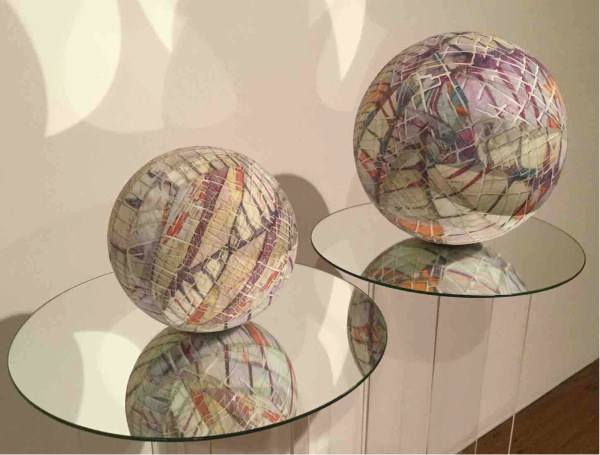
Figure 20. Emma Robertson, What Remains, 2017. Mixed media, 2 x 40 cm diameter.
Drawing changes our relationship to a place. We see it more. We enter into it more fully. We start to see more beauty, more value in the spaces we encounter, and develop a deeper intimacy and familiarity with them. Once this happens, it's much harder to treat them carelessly, inconsiderately - because we come to feel for them, we come to care. Through the mindfulness of drawing, we discover one of the most profound aspects of mindfulness - that in our awareness, a natural sense of sympathy and empathy arises for the things we encounter. These may be things of the natural world, but they may also be other people, our own drawings, or even ourselves. Out of mindfulness, kindness can arise, concern and caring, compassion and understanding. With our sense of connection to the world around us affirmed, we no longer tread blindly through it; we feel more inclined to treat things and ourselves with loving-kindness.10
Footnotes
- Ascendant and Descendant exhibition catalogue, Emma Robertson, Botanic Gardens Trust, 2009, Page 1. ↩
- Living Fossils are species which exist in our time in the same or similar form as their earlier fossil record. ↩
- Two books in particular helped the development of my ideas and research. Mindsight, by Dr Daniel Siegel (2010), and How Emotions Are Made: The Secret Life of the Brain, by Dr Lisa Feldman Barrett (2017). ↩
- Constantin von Ettingshausen, Die Tertiaer-Floren Der Oesterreichischen Monarchie (Vienna, Austria, 1851). ↩
- The first workshop was Drawing for the Mind on Sunday 8 October and the second workshop was Making with Mindfulness on Sunday 22 October 2017. ↩
- McDonald, R., Chai, H-Y, and Newell, B. R. (2015). Personal experience and the 'psychological distance' of climate change: An integrative review. Journal of Environmental Psychology, 44 109-118. ↩
- The affinity of human beings with the natural world, as popularised by Edward O. Wilson in his 1984 book Biophilia. ↩
- Ecopsychology is defined as the "relation between personal health and well-being and the health and well-being of our home, the Earth." ↩
- Sifferlin, A. Time Magazine, (2016) The Healing Power of Nature, 25/07/2016, 24-26. ↩
- Wendy Ann Greenhalgh, Mindfulness and the Art of Drawing: A Creative Path to Awareness (Brighton: Leaping Hare Press, 2017), 99. ↩

